PIR Sensor Principle (1) - Basics
페이지 정보
본문
All objects emit radiation corresponding to their temperature, provided they are above absolute zero (-273°C).
Among these, objects with low temperatures, such as the human body, emit far-infrared radiation.
Warmer objects emit more infrared radiation than cooler objects, and the radiated energy shifts towards shorter wavelengths and closer to the visible light spectrum as the temperature increases, as shown in Figure 1.
The surface temperature of the human body varies depending on clothing and ambient temperature, but is generally between 20 and 35 degrees Celsius.
The emitted infrared radiation peaks around 10 micrometers. By utilizing these changes in infrared radiation, infrared motion sensors detect the presence of a human body.
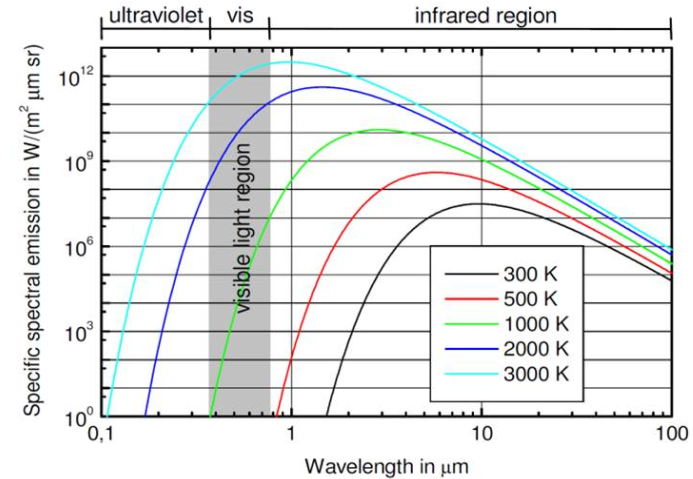
<Figure 1: Relationship between Temperature and Wavelength>
Pyroelectric Effect and the Operating Principle of PIR Sensors
The pyroelectric effect refers to the phenomenon where a temperature change in a pyroelectric material induces the generation of electric charges on its surface.
Typically, pyroelectric materials such as PZT (lead zirconate titanate) and LiTaO3 (lithium tantalate) are used. These materials exhibit spontaneous polarization, as shown in the left side of Figure 2, resulting in a constant charge on their surfaces. In the absence of external thermal changes, these charges are neutralized by ions in the air, preventing any output.
When infrared radiation is incident on a pyroelectric material, it causes the surface temperature to rise, disrupting this equilibrium. The resulting imbalance of charge is detected as a voltage change, which is the fundamental operating principle of PIR sensors.
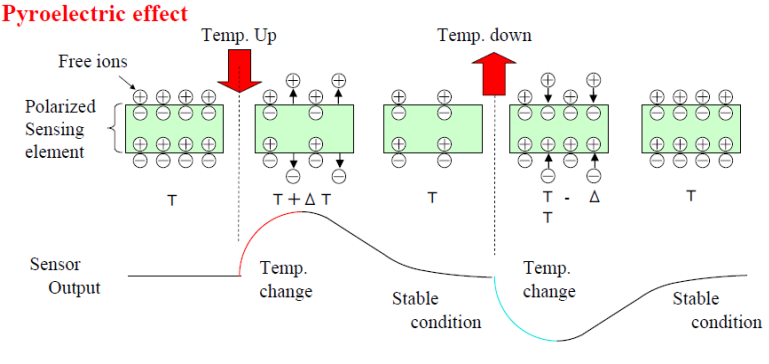
<Figure 2: Pyroelectric Effect>
Types of PIR Sensors
Our company offers two main types of PIR sensors: analog and digital.
Analog sensors have an internal structure as shown in Figure 3. Their key features and advantages are as follows:
Features:
- Direct voltage output from the FET
- Sensitive to EMI (Electromagnetic Interference)
Advantages:
- High degree of customization to suit specific customer needs.
- Relatively lower cost compared to digital sensors.
- Disadvantages: * Involves designing custom hardware components such as bandpass filters, amplifiers, and analog-to-digital converters. * Demands specialized circuit design expertise to mitigate electromagnetic interference..
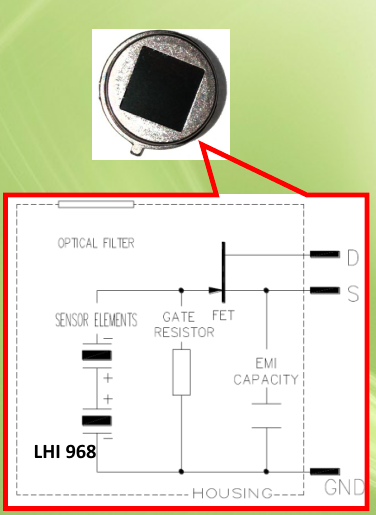
<Figure 3: Analog PIR Sensor, LHI968>
Features:
- Provides a digital output signal.
- Offers two outputs through a Direct Link interface: an analog-to-digital converter (ADC) and ambient temperature data.
Advantages:
- Exhibits superior resistance to electromagnetic interference (EMI) compared to analog sensors.
- Simplifies circuit design by requiring only the implementation of a digital bandpass filter (0.4-10Hz), eliminating the need for additional hardware components such as amplifiers and analog-to-digital converters.
Disadvantage:
- Generally more expensive than analog sensors.
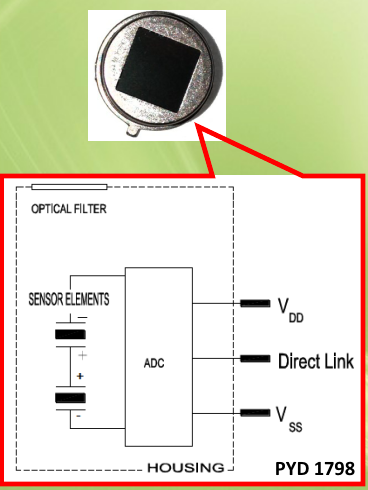
<Figure 4 Digital PIR Sensor, PYD1798>
Fresnel Lens
Fresnel lenses are utilized to expand the field of view and detection range of PIR sensors. As illustrated in Figure 5, a variety of lens designs can be implemented to achieve desired detection angles and distances.

< Figure 5 Fresnellens>
Typically made of plastic, Fresnel lenses are designed to transmit wavelengths in the 8-10um range. Due to their lightweight and cost-effective nature, they are widely used. Figure 6 presents the top and side views of our 9912 lens. As shown, it offers a detection angle of 86.5 degrees horizontally and 75.6 degrees vertically, with a detection range of approximately 8-9 meters.
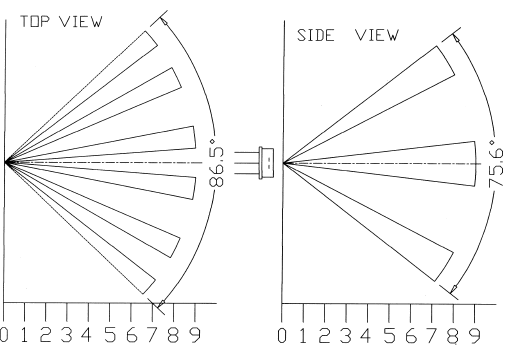
< Figure 6 Fresnel Lens 9910>
For more information, please contact us at the email address below.
camster@bnbopto.co.kr
Comment
등록된 댓글이 없습니다.
